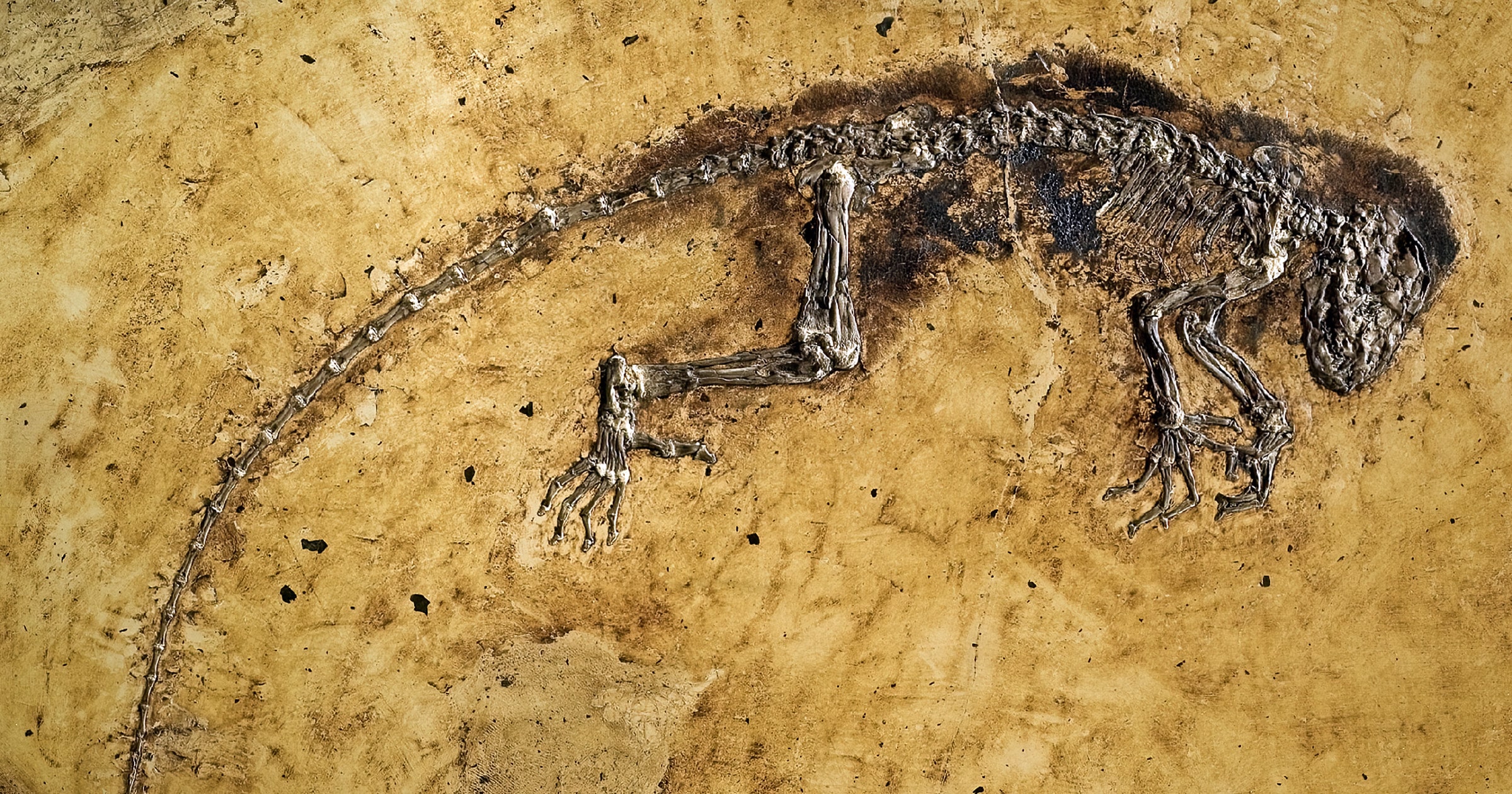 Human Origins
Human Origins
 Paleontology
Paleontology
Fossil Friday: Darwinius, or How Wishful Thinking Makes a Missing Link

In 2008 the best-preserved fossil primate yet discovered was acquired from a private collection for the Natural History Museum in Oslo by the Norwegian paleontologist Jørn Hurum. The remarkable fossil originated from the famous Eocene (about 47 mya) Messel locality in Germany and was named Darwinius marsillae but it became more famous under its nickname “Ida.” To finance the very expensive purchase of the fossil (allegedly for a sum of $750,000), Hurum orchestrated a unique publicity stunt that included a book with the sensational title The Link: Uncovering Our Earliest Ancestor (Tudge & Young 2009) and a TV documentary by BBC and the History Channel titled The Missing Link. The latter was narrated by no less than Richard Attenborough and advertised with a ridiculous TV teaser, which even compared the importance of the discovery to events like Pearl Harbor, the Kennedy assassination, and the Apollo 11 moon landing.
An Overhyped Fossil
The massive media campaign lead to headlines in the world press that were not content with just calling the fossil a missing link but simply “THE link” or “the eighth wonder of the world” (Randerson 2009). In the original description the authors claimed that Darwinius is the long sought missing link in the evolution of anthropoids, the primate group that not only includes monkeys and apes but also us humans (Franzen et al. 2009). Early critiques focused on the media hype, the careless study, and evidence that Ida could instead be a lemur (Barras & Hooper 2009, Beard 2009, Dalton 2009; also see Luskin 2009a, 2009b, 2010).
Two new studies of the fossil published within a year by Seiffert et al. (2009) and Williams et al. (2010) indeed overturned the bold original claim and showed that Darwinius belongs to the well-known adapoid group, which is considered to be closer to lemurs than to anthropoid primates. The original authors tried to defend their view (Gingerich et al. 2010), but were hard pressed to explain why their phylogenetic analysis based on few characters and few taxa should trump the opposing studies based on many more characters and taxa, thus a much broader base of data.
It looks like nobody in the scientific community or even the media swallowed this failed apologetic for an overhyped fossil (see the Wikipedia article on Darwinius). The general opinion today is that Darwinius is not a missing link at all, not even a real monkey, but just another representative of a relatively insignificant early side-branch of primates.
References
- Barras C & Hooper R 2009. Q&A: Jørn Hurum on Ida, media hype and primate evolution. New Scientist May 27, 2009. https://www.newscientist.com/article/dn17202-qa-jrn-hurum-on-ida-media-hype-and-primate-evolution/
- Beard C 2009. Why Ida fossil is not the missing link. New Scientist May 21, 2009. https://www.newscientist.com/article/dn17173-why-ida-fossil-is-not-the-missing-link/
- Franzen JL, Gingerich PD, Habersetzer J, Hurum JH, von Koenigswald W & Smith BH 2009. Complete primate skeleton from the middle Eocene of Messel in Germany: morphology and paleobiology. PLoS ONE 4(5):e5723, 1–27. DOI: https://doi.org/10.1371/journal.pone.0005723
- Dalton R 2009. Fossil primate challenges Ida’s place. Nature 461, 1040. DOI: https://doi.org/10.1038/4611040a
- Gingerich PD, Franzen JL, Habersetzer J, Hurum JH & Smith BH: Darwinius masillae is a Haplorhine – Reply to Williams et al. (2010). Journal of Human Evolution 59(5), 574–579. DOI: https://doi.org/10.1016/j.jhevol.2010.07.013
- Luskin C 2009a. The Big Ida: The Rise & Fall of Another Missing Link & Other Media Hype. Salvo Magazine 10. https://salvomag.com/article/salvo10/the-big-ida
- Luskin C 2009b. The Evolution of “Ida”: Darwinius masillae Fossil Downgraded From Ancestor to Pet. Evolution News October 24, 2009. https://evolutionnews.org/2009/10/the_evolution_of_ida_darwinius/
- Luskin C 2010. The Rise and Fall of Missing Link Superstar “Ida”. IDEA Center. http://www.ideacenter.org/contentmgr/showdetails.php/id/1503
- Randerson J 2009. Deal in Hamburg bar led scientist to Ida fossil, the ‘eighth wonder of the world’. The GuardianMay 19, 2009. https://www.theguardian.com/science/2009/may/19/fossil-ida-missing-link-discovery
- Seiffert ER, Perry JGM, Simons EL & Boyer DM 2009. Convergent evolution of anthropoid-like adaptations in Eocene adapiform primates. Nature 461(7267), 1118–1121. DOI: https://doi.org/10.1038/nature08429
- Tudge C & Young J 2009. The Link: Uncovering Our Earliest Ancestor. Little Brown & Co., Boston (MA), 272 pp. https://www.amazon.com/Link-Uncovering-Our-Earliest-Ancestor/dp/0316070084/
- Williams BA, Kay RF, Kirk EC, Ross CF 2010. Darwinius masillae is a strepsirrhineda reply to Franzen et al. (2009). Journal of Human Evolution 59(5), 567–573. DOI: https://doi.org/10.1016/j.jhevol.2010.01.003
